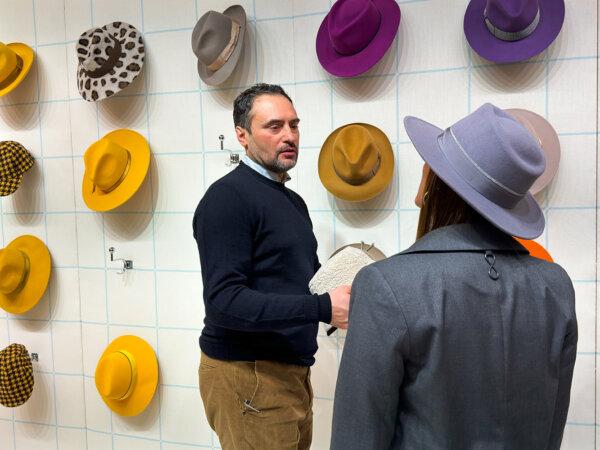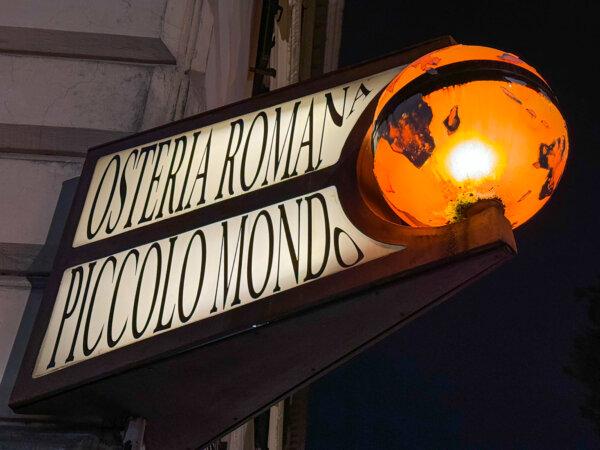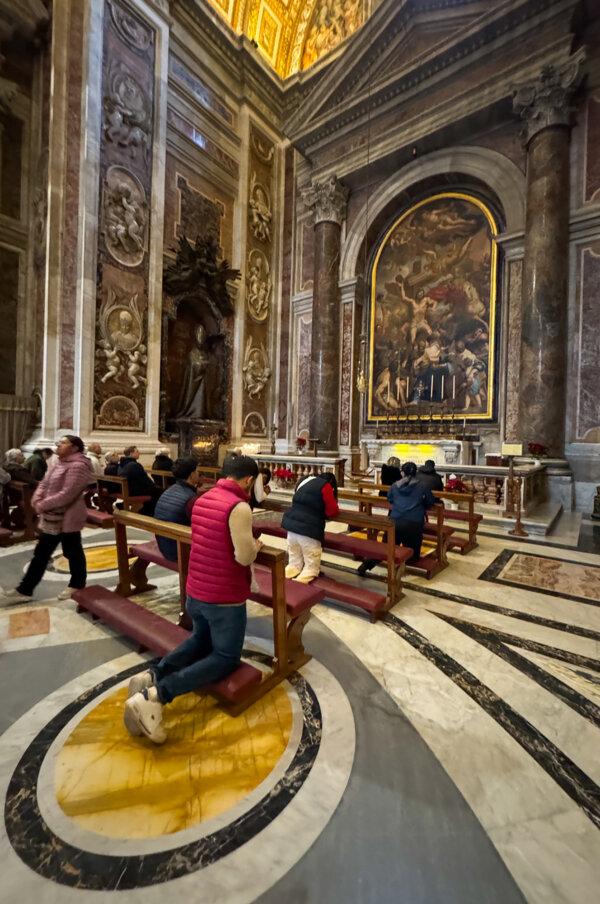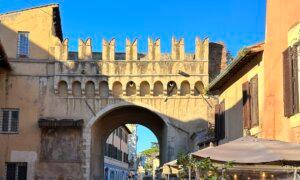ROME—Although it was midwinter, streets in Rome were crowded, and historic sites were surprisingly well-populated with visitors. Christmas decorations stubbornly remained in place, appearing, from my perch above the graceful drape of the Spanish Steps, like campfires burning in the early lowering night. On the Piazza di Spagna, 135 Roman travertine steps below, the Dior shop stood canopied by an enveloping holiday display of butterflies in luminescent silver and gold.
I was back in Rome after a long absence. This time, following years of struggling to learn Italian, I had arrived with my skills in that musical language having been raised from nonexistent to embarrassing. I had memorized some of the notes but remained without practice in the melody. I was on my way to Florence to attend the winter edition of the semi-annual Pitti Uomo menswear event, and it was therefore serendipitous that, walking down the gentle slope of Via Sistina, I found a Borsalino hat shop. On my last visit to Italy, I had worn a classic gray fedora that was later donated to charity—after long and elegant service.

Patrizia, the experienced saleswoman in attendance in the small store (the brand has many retail venues in Italy), guided me to my departed hat’s near-twin: an Italian-style fedora in light gray rabbit felt. An inspection in the mirror revealed that this style of headgear, with its broad brim pulled smartly low over my forehead, was literally a crowning improvement on nature. Thereafter, although I was nearly always in places inhabited by international business people and tourists, I was routinely mistaken for Italian. That meant being pressed into using my language skills; whenever my cover was thereby blown, so grateful were the locals that I even made the effort, they would smile—and usually keep right on in Italian.
A helpful exception was at my hotel, the aptly named Splendide Royal, on a hill overlooking the expansive Villa Borghese Gardens, which somehow remained verdant in the dead of winter. The hotel’s glass and metal awning in the Art Nouveau style curved and spread over a cobblestone street. The classical reliefs that crowned the walls of my spacious room were executed with subtle elegance. You know you are in Italy when your hotel room puts your whole house to shame.

I am a big believer in riding the loyalty points wave (pay less, get pampered more), so thanks to my membership Leaders Club of the Leading Hotels of the World, I was upgraded to a spacious room with a view of the gardens. While waiting for that to be readied, I went upstairs to Mirabelle, a restaurant and bar on a broad terrace that is both open and closed. As I gazed in jet-lagged contemplation over the gardens and enjoyed the kind of fragrant done-just-right cappuccino that you can find all over Italy, I had a strange sense of deja vu—that I had been here before, taking in almost exactly that view. In particular, the twin towers of a monastery to the west were inexplicably familiar, and I do not recall ever having been an Italian monk.
Hospitality is about service first and foremost, and the hotel staff could not have been nicer. So, when I called for the recommendation of a restaurant in the area, I was eager to hear the first choice. Without hesitation, I was directed to the Piccolo Mondo.
“The Piccolo Mondo!” I exclaimed. “I dined there 32 years ago.” The hotel made the reservation. I arrived at the old restaurant to find its vaults painted solid white, as if an Italian wine cellar had gone vacationing on Mykonos. In my travel memoir, “Once Around the Fountain,” I had told of that comic first visit, when Rome has been virtually depopulated during an eye-glazing summer heat and with an unfavorable exchange rate that had kept Americans away. I had softly questioned the restaurant bill, only to see it, in retaliation, torn up in front of me—granting my party of two an unintended free meal.

Now, in the winter chill, the 70-year-old restaurant appeared reinvented, exuding refinement and warmth. My main course was a sophisticated assembly of three styles of veal in cauliflower cream—a kinetic, gourmet upgrade from my previous experience. When I told the manager that I was there after so long an absence (and a change in management), he was visibly pleased and invited me to return, albeit with a bit more haste.
The next morning, the sun rose over quiet Sunday streets. People were heading to church. I elected to follow and that is how, after twists along the way and a wait at airport-style security, I attended afternoon Mass at St. Peter’s Basilica. Four priests officiated in a dignified relay. Many of the worshipers had apparently arrived spontaneously while visiting the basilica.
Being the seat of the Catholic world, with Pope Francis possibly in his apartments just above, gave the service a quality of both majesty and inclusion. At the gift shop, I bought small bottles of Vatican-blessed holy water to use as presents. I then reverted to the secular, for Chianti at Mirabella, thereby adding a liquid counterpoint with which to close a Roman sabbath.

When I was nearly finished, I casually asked about the origins of the hotel. A staffer explained that it had formally been a monastery and that it incorporated a part of what had once been the Pullman Boston (now the Sofitel) next door. Only then did I realize that the view from the terrace was so familiar because I had photographed it and made a large print. And that was because I had stayed in this portion of the building before, when it was a piece of the Pullman Boston. Like that hat I had once worn and thought was gone, only to become mine again by repurchase, and like the restaurant where I had dined decades ago and was yet still available to me, the hotel where I had once stayed was again my temporary home in Italy.
If You Go
LodgingOther info








